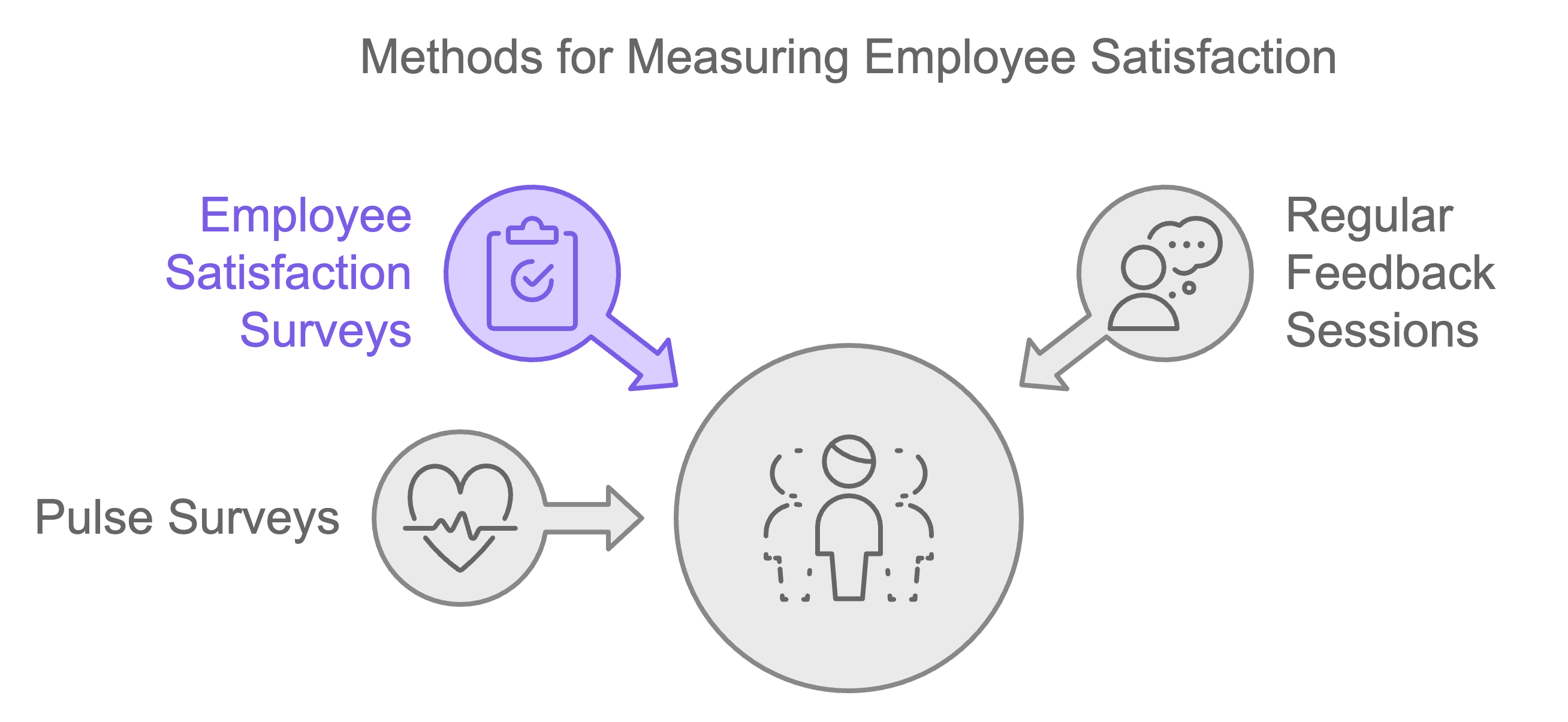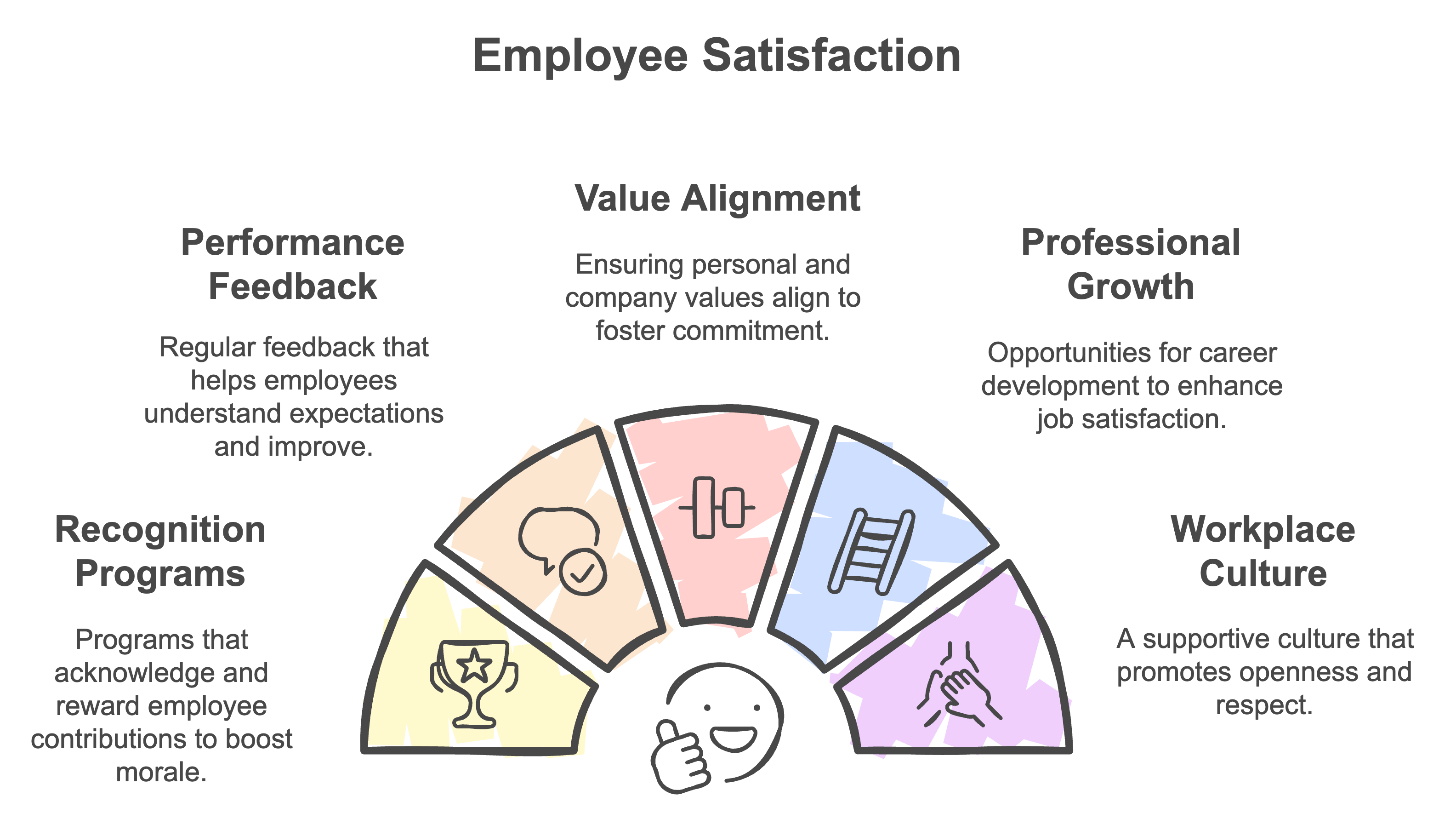Employee satisfaction is a key component of any thriving business. Understanding and enhancing employee satisfaction can lead to increased productivity, better retention, and a more positive workplace culture. In this article, we explore what employee satisfaction is, why it matters, how to measure it, and effective strategies to boost it.
Table of Contents
- What is Employee Satisfaction?
- Importance of Employee Satisfaction for Business Success
- How to Measure Employee Satisfaction
- Strategies to Improve Employee Satisfaction
- Benefits of Happy Employees
- Employee Satisfaction vs. Employee Engagement
What is Employee Satisfaction?
Employee satisfaction refers to how content employees are with their jobs, including their work environment, job role, management, and company culture. It is a measure of how well employees' expectations are being met and is crucial for employers to understand, as it directly impacts productivity, loyalty, and overall organizational success. High employee satisfaction is an indicator of a positive and supportive work environment, which is essential for fostering employee loyalty and reducing turnover. For more insights, see Creating a Happy Workplace: The Science Behind Employee Satisfaction.
Importance of Employee Satisfaction for Business Success
Employee satisfaction plays a pivotal role in the success of a business. Here are some key ways it impacts the organization:
- Link Between Satisfaction and Productivity: Satisfied employees are typically more engaged and productive. Studies have shown that businesses with higher employee satisfaction levels enjoy better performance metrics and overall productivity.
- Impact on Retention and Loyalty: Employees who are satisfied with their job are less likely to leave, reducing turnover and the associated costs of recruitment and training. Employee satisfaction leads to increased loyalty, which helps maintain continuity and stability in business operations.
- Positive Work Environment: When employees are happy, they contribute to a positive work environment. This can improve teamwork, collaboration, and overall morale, making the workplace more enjoyable for everyone.
For more details, check out The Incredible Effect of Recognition on Employee Happiness.
How to Measure Employee Satisfaction
To improve employee satisfaction, it's essential to measure it effectively. Here are some common methods:
- Employee Satisfaction Surveys: Surveys are one of the most popular tools for gauging satisfaction. They allow employers to understand how employees feel about different aspects of their job and provide data that can be analyzed for actionable insights.
- Regular Feedback Sessions: One-on-one meetings or feedback sessions are another effective way to measure employee satisfaction. These sessions allow employees to voice their concerns and provide their input directly, fostering a culture of transparency and continuous improvement.
- Pulse Surveys: Short, frequent surveys can also be used to track satisfaction over time and identify emerging issues before they become significant problems.

For more insights on measuring employee satisfaction, see Measuring Employee Engagement: Key Metrics and Tools.
Strategies to Improve Employee Satisfaction
Improving employee satisfaction requires a strategic approach. Here are some proven methods to boost satisfaction levels:
- Implementing Employee Recognition Programs: Recognizing and rewarding employees for their contributions is one of the most effective ways to increase satisfaction. Recognition helps employees feel valued and appreciated, which in turn boosts their morale and productivity.
- Frequent Performance Feedback: Providing frequent performance feedback is essential for keeping employees aligned and engaged. Employees appreciate timely and clear feedback, as it helps them understand expectations and improve continuously. In fact, research shows that 72% of employees feel that their performance would improve if they received corrective feedback more often. Regular feedback also strengthens the employee-manager relationship, contributing to greater satisfaction and trust.
- Aligning Company Values and Personal Values: Ensuring that employees' personal values align with the company’s values is crucial for enhancing job satisfaction. When employees see their own beliefs reflected in the mission and actions of the company, it fosters a deeper sense of belonging, motivation, and commitment, leading to increased job satisfaction.
- Opportunities for Professional Growth: Offering opportunities for career development, such as training programs, mentorship, and upskilling, helps employees feel that they are progressing in their careers, which significantly enhances their satisfaction.
- Healthy Workplace Culture: Building a culture where employees feel heard, supported, and respected is fundamental to improving satisfaction. Developing psychological safety and trust in workplace relationships is crucial. When employees feel safe to express themselves without fear of negative consequences, it fosters openness, collaboration, and mutual respect. Additionally, open communication channels and a strong emphasis on diversity and inclusion help in building a supportive and positive culture.

To read more on how happiness contributes to workplace productivity, see 25 Effective Pulse Survey Questions to Enhance Employee Satisfaction and Workplace Culture.
Benefits of Happy Employees
Happy employees are not only more productive but also contribute positively to the company culture. Here are some key benefits:
- Higher Productivity: Happiness directly impacts productivity. Employees who feel satisfied and happy are more motivated to do their best, leading to improved outcomes.
- Positive Effects on Morale and Teamwork: When employees are happy, they are more likely to collaborate effectively, which boosts overall team morale. This can lead to better problem-solving and innovation within the workplace.
- Case Studies: Many companies, like Google and Zappos, are known for their strong focus on employee happiness, which has translated into exceptional business performance.
Check out Creating a Happy Workplace: The Science Behind Employee Satisfaction for more information on the link between employee happiness and productivity.
Employee Satisfaction vs. Employee Engagement
While employee satisfaction and employee engagement are often mentioned together, they are distinct:
- Employee Satisfaction: Refers to how content employees are with their job and work environment.
- Employee Engagement: Refers to the emotional commitment that employees have towards their work and the company.
Both satisfaction and engagement are critical for business success, but they serve different purposes. High satisfaction can contribute to better engagement, but it's also important to actively cultivate engagement through initiatives that align with company goals and values.
For more on this topic, see Employee Engagement Survey: How to Conduct and Analyze Employee Engagement Surveys.
Conclusion
Employee satisfaction is crucial for building a productive, loyal, and happy workforce. By understanding what drives satisfaction and implementing effective strategies to improve it, companies can enhance productivity, reduce turnover, and create a positive work environment. Organizations like Google have demonstrated that investing in employee satisfaction not only benefits employees but also significantly impacts the overall success of the company.
Leveraging tools like Happily.ai can further enhance satisfaction levels by providing real-time feedback, recognition, and analytics to continuously improve the work environment.









